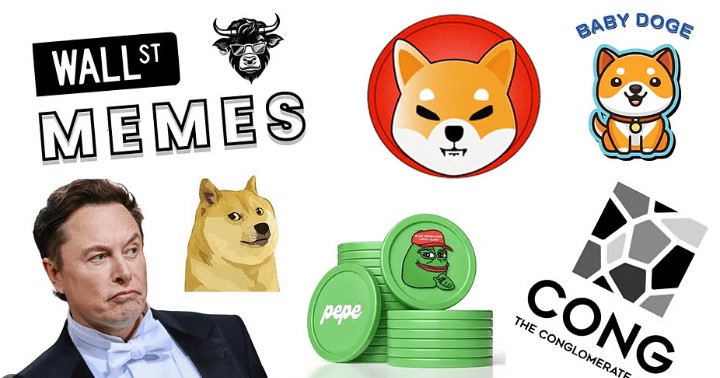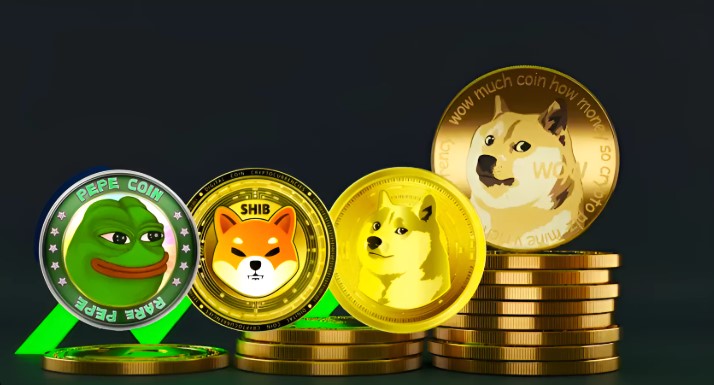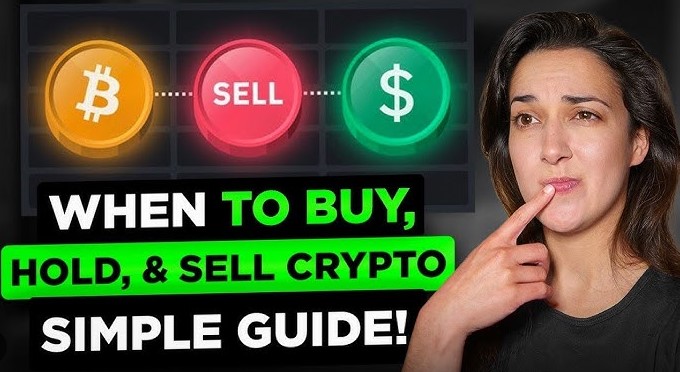Discover how meme cryptocurrencies like Dogecoin and Shiba Inu turned from internet jokes into billion-dollar phenomena. Learn the surprising secrets behind their rise.
From Meme to Millionaire: Case Studies of Joke Coins That Became Billion-Dollar Startups
At first glance, the idea sounds absurd—cryptocurrencies born from memes, jokes, or parodies of serious projects reaching valuations that rival Fortune 500 companies. Yet in 2025, this has become a recurring reality. From Dogecoin’s humble beginnings to PEPE’s unexpected bull runs, meme coins have shifted from internet punchlines to serious financial instruments.
But how did these so-called “joke coins” make it big? And more importantly, are there lessons for the rest of us? Let’s break down real case studies of meme coins that defied the odds—and what made them click with the market.
- Dogecoin: The OG Meme Coin That Refused to Die
Born: 2013
Peak Valuation: $89 billion (2021)
Current Status: Still among the top 10 coins in 2025
Originally created as a parody of Bitcoin, Dogecoin was based on the Shiba Inu “Doge” meme. Co-founders Billy Markus and Jackson Palmer had no intention of turning Dogecoin into a real currency. But fate, Elon Musk tweets, and Reddit hype had other plans.
Why It Succeeded:
Community Culture: Dogecoin’s community championed fun, kindness, and tipping culture.
Celebrity Hype: Elon Musk frequently tweeted about it, causing massive price spikes.
Transaction Speed: Faster than Bitcoin, making it more practical for micro-payments.
Lesson: Community can outweigh technology in crypto adoption.

- Shiba Inu: The “Doge Killer” That Built an Ecosystem
Born: 2020
Peak Valuation: $41 billion (2021)
Current Status: SHIB token is part of a growing DeFi ecosystem
Shiba Inu started as a Dogecoin parody, but quickly developed its own identity. The team behind SHIB went further by launching ShibaSwap (a DEX), NFTs, a metaverse, and staking features.
Why It Succeeded:
Multi-utility Ecosystem: Unlike most meme coins, SHIB built infrastructure.
Decentralized Distribution: 50% of the token supply was sent to Ethereum co-founder Vitalik Buterin (who later burned most of it).
Grassroots Growth: The project thrived on community-driven marketing.
Lesson: Memes may open the door, but utility keeps people inside.
- PEPE: The Frog That Croaked Into the Charts
Born: 2023
Peak Valuation: $1.6 billion
Current Status: Niche meme coin with active derivatives market
Inspired by the controversial yet beloved “Pepe the Frog” meme, PEPE exploded into the market with zero utility—but massive cultural capital.
Why It Succeeded:
Meme Virality: PEPE’s meme history gave it instant recognition.
Zero Tax Policy: Encouraged high-volume trading and liquidity.
Speed-to-Market: Launched and listed on major exchanges within weeks.
Lesson: Timing and cultural resonance can sometimes trump whitepapers.
- Floki Inu: Viking-Themed Memecoin with Real Ambitions
Born: 2021
Peak Valuation: $3 billion
Current Status: Active in metaverse development and DeFi
Named after Elon Musk’s pet Shiba Inu, Floki Inu leveraged its meme status while aggressively pushing product development. It built NFT marketplaces, launched a “Floki University” for crypto education, and explored partnerships with NGOs.
Why It Succeeded:
Aggressive Marketing: Billboards in London, NYC, and beyond.
Utility Roadmap: NFTs, metaverse, and staking functionalities.
Elon Connection: The name alone generated hype.
Lesson: Brand association + product vision = meme coin longevity.
What Makes a Meme Coin Go Mainstream?
After analyzing these cases, it’s clear that while hype is essential in the beginning, staying power comes from a mix of:
- Community Engagement
- Memetic Branding
- Developer Commitment
- Innovative Utility or Ecosystem
- Strategic Partnerships and Listings
The joke is just the beginning. Turning that joke into a billion-dollar startup takes serious work.
Red Flags: When Meme Coins Go Wrong
Not every meme coin hits the jackpot. Rug pulls, scams, and “pump-and-dump” schemes plague the sector.
Warning Signs:
No whitepaper or clear roadmap
Anonymous founders
Extreme centralization (few wallets holding majority supply)
Poorly written websites and suspicious tokenomics
As a rule: if it looks like a joke and feels like a scam—it probably is.
New Wave in 2025: Hybrid Meme Coins
The meme coin space is evolving. In 2025, we’re seeing a wave of hybrid meme coins—projects that start with humor but quickly pivot to offer real value. Some even blend cross-industry themes like:
AI x Memecoins: Coins that integrate with AI models or reward AI contributions.
Fitness x Memecoins: “Move-to-earn” coins with meme branding.
Eco-Memes: Climate-conscious meme coins funding green tech.
This cross-pollination allows meme projects to tap into wider audiences while preserving viral appeal.

Real-World Impact: More Than Just Price Pumps
What many overlook is how meme coins have democratized investing. They’ve brought millions into the crypto space who might’ve found Bitcoin or Ethereum too intimidating. For better or worse, meme coins made finance fun—and sometimes, wildly profitable.
They’ve also influenced:
Charity Campaigns: Dogecoin raised funds for clean water in Kenya.
Brand Collaborations: Floki Inu partnered with NGOs and sports teams.
Crypto Culture: Memes are now a native marketing language in DeFi. Also Read>>>>
Final Thoughts: Memes Are the Trojan Horses of Web3
While Bitcoin remains the king and Ethereum the smart contract giant, meme coins have carved their own chaotic, colorful lane in the crypto space. They may start with jokes—but the stories they create are anything but silly.
In an era where attention is the most scarce resource, meme coins excel at capturing it. And where attention flows, capital follows.
Are they risky? Absolutely.
Are they dead? Not even close.
Can they create wealth? Just ask early SHIB holders.
Want to ride the next meme wave—without getting wrecked? Stay updated with in-depth crypto insights, coin analysis, and real case studies by subscribing to our newsletter.





